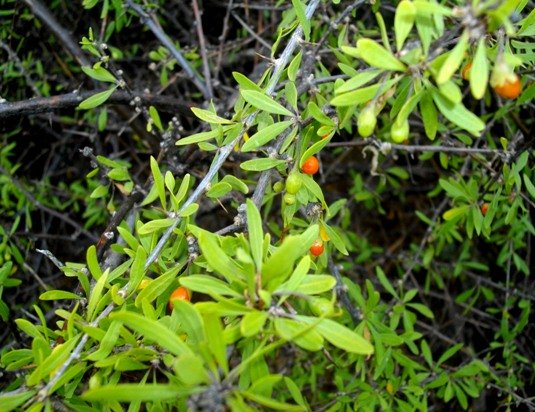Lycium oxycarpum

Author: Ivan Lätti
Photographer: Ivan Lätti
Lycium oxycarpum, commonly known as Karoo honeythorn and in Afrikaans as wolwedoring (wolves thorn), is a spreading shrub reaching 3 m in height (SA Tree List No. 669.1).
Oxycarpum is derived from the Greek words karpos meaning fruit and oxys meaning any of the following: sharp, pointed, dazzling, shrill or pungent. Since the shape of the fruit probably does not fit the options and shrill only describes some calls of the birds that eat the fruit, a pungent taste might be it, unless the colour is thought to be dazzling. Thats until a painful encounter with one of the thorns brings home a message about sharpness, although not pertaining to the fruit.
These fruits of Lycium oxycarpum were still on the bush near Beaufort West in December. Flowering usually occurs in winter and spring, but will also happen in summer after rain, followed by such late fruiting.
The species distribution in the Western Cape and Northern Cape is inland, in the Eastern Cape reaching the coast north of Gqeberha (Port Elizabeth).
This is a large area with considerable habitat variation. Mainly low-lying flood plain flats and streambanks among scrub in deep soil of dry regions, Karoo honeythorn grows where the land is subject to extremes of temperature. The species is not considered to be threatened in its habitat early in the twenty first century (Vlok and Schutte-Vlok, 2015; Coates Palgrave, 2002; http://redlist.sanbi.org).

